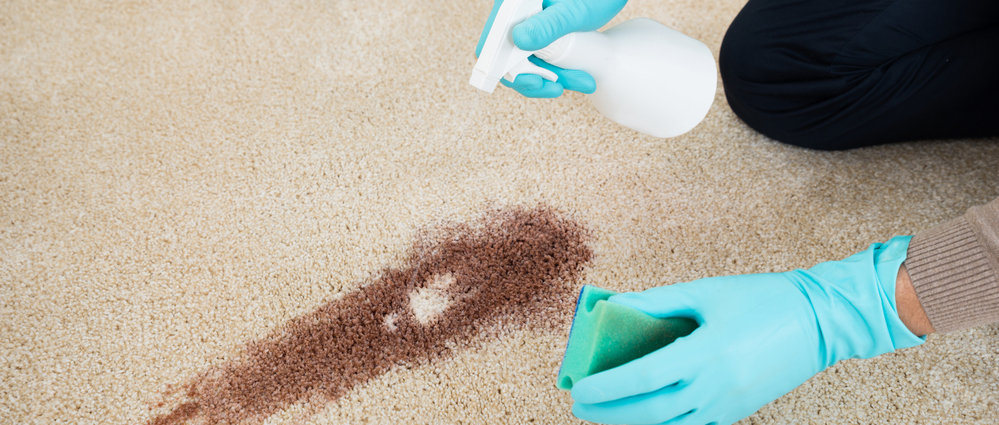What Type of Green Flooring is Best for Your Home?
Dec 9, 2014

We are becoming increasingly aware of our impact on the earth and the way that we use the earth’s resources. As the world’s population grows, resources become more scarce and more expensive. As a result, more and more people are seeking out products that have less of an impact on earth and more benefits to their health and their wallets.
Most people already have a personal reason for choosing green flooring, but if you need a couple of reasons why you should choose green flooring, here you are:
– it’s often made of recycled or post-consumer materials, reducing dependency on oil
– may have a longer life than conventional flooring
– is a healthier option for you and your family, as it is required to meet tougher government regulations
– can be less costly
The truth is, there’s just no such thing as zero-impact anything, and that goes for flooring too. So take some time to think about your flooring needs, such as room function, cleaning and maintenance, room occupants (allergies? asthma? chemical sensitivities?) and acoustic requirements (media room vs. baby’s room).
In general, the following tips should be considered when choosing your eco-friendly flooring:
• When possible, choose materials with recycled content, such as post-consumer or post-use recycled content
• Find out how a product is discarded or re-used after removal
• Understand the manufacturer’s environmental policy
• Get proof that your wood flooring was sustainably harvested, reclaimed, or salvaged, using the Forest Stewardship Council
• Understand installation methods and choose adhesives and sealants with low VOCs
• Determine your cleaning and maintenance requirements
Take a look at the difference in the following types of flooring to determine which green flooring is appropriate for your home:
Bamboo
• Grows quickly and can be harvested in a three- to five-year cycle
• Low impact manufacture, made by slicing bamboo into strips, boiling it in water, laminating it into board, and kiln-drying the resulting material
• Transportation from the Asia Pacific region requires high energy and air emissions
• Choose adhesives that contain minimal or no formaldehyde
• Improve indoor air quality by sawing and sanding outdoors as much as possible prior to installation
• Durable – harder than many hardwoods and can last for 30 to 50 years
• Upon removal, it will biodegrade in landfills or can be burned for energy
• Look for FSC-certified products with no added formaldehyde
• Bamboo is ideal for bedrooms, living rooms, family rooms, dining rooms, kitchens and entryways
Carpet
• Look for the Carpet and Rug Institute seal of approval, called Green Label Plus, which certifies that carpet has been tested for emissions of individual VOCs rather than just the overall level of VOCs
• Recycled carpet is made primarily from post-consumer plastic soft-drink containers
• Recycled carpet padding can be made from old carpet padding and reclaimed carpet fibers
• Natural carpets and rugs can be made from wool, cotton or even grasses with minimal processing and treatment
• Wall-to-wall carpets may require an adhesive
• Use low-emitting adhesives if needed
• Excellent sound- and thermal-insulating properties
• Difficult to keep clean, is a big dust and dirt collector
• Softest material underfoot, but requires relatively frequent replacement (about every 11 years)
Cork Flooring
• Highly renewable, although at a slower rate than bamboo
• Energy requirements to transport cork from the Mediterranean are significant
• Has a slight smell that most people consider pleasant
• Some manufacturers claim to have hypoallergenic cork
• Avoid cork-vinyl composites that have a PVC backing and instead choose all-natural cork
• Choose low-VOC adhesives if installation method is gluing
• A natural wax or low-VOC polyurethane sealer is recommended
• Keeps shape well and is naturally mold, moisture and rot resistant
• Durable as hardwood flooring, biodegradable and nontoxic (it can even be ground up for compost)
• Easy to clean and maintain
• Good foot support and sound absorption
• Cork is an excellent choice for kitchens and family rooms
Tile Flooring
• Recycled glass tile can made from lightbulbs, ground glass and auto windshields
• Energy requirements for production are high, but tile is durable and produced in many locations from abundant natural clays
• Use local sources to reduce energy used in transportation
• Choose low-VOC adhesives
• During installation, tiles should be cut and ground outside as much as possible
• Tile will outlast vinyl flooring if properly installed, and it biodegrades after removal
• Can be reused and may also be crushed and recycled as aggregate material for sidewalks and roads
• Easy to clean
• Tile is great in kitchens, bathrooms, entryways, and fireplaces
Wood Flooring
• Recycled woods can add warmth to your space
• North American beech is depleted and should be avoided
• Choose wood flooring that is FSC-certified or otherwise sustainably harvested
• Wood’s long replacement cycle distributes its environmental impacts over decades
• An excellent choice for indoor air quality, but choose finishes wisely
• Look for wood that has been pre-finished at the factory, where off-gassing can be handled in a controlled environment
• Choose low-VOC adhesives and sealers
• Avoid products with added formaldehyde (sometimes used in engineered/pressed wood backing or sublayers)
• Easy to clean and durable
• Wood can be used in just about any room in your home

